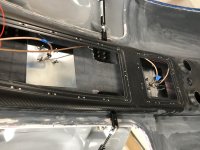UnPossible
Well Known Member
Hey - I am getting ready to mount the GPS antennas for my 650 and G3X and reading the Garmin manual, it says that "Although no ground plane is required, the antennas typically perform better when a ground plane is used."
Right now, I am leaning towards mounting both of them on top of the the FG cabin top... which obviously would not provide a ground plane. Has anyone had issues with GPS antennas mounted on the FG casbin top, as opposed to further aft on the AL fuselage?
Thanks,
Jason
Right now, I am leaning towards mounting both of them on top of the the FG cabin top... which obviously would not provide a ground plane. Has anyone had issues with GPS antennas mounted on the FG casbin top, as opposed to further aft on the AL fuselage?
Thanks,
Jason





